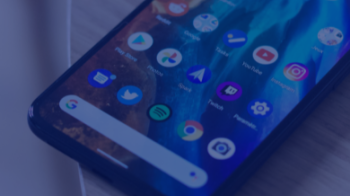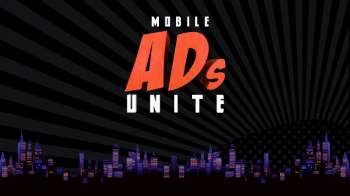Moving on from a decade of mobile
Katharine Hansford - Digital Transformation Director, Zenith
It has become a common joke among digital marketers to talk about the elusive “year of mobile”. Experts have been proclaiming the tipping point of mobile as a marketing platform since as early as 2009, and a small number believe it hasn’t even arrived yet. As IAB UK’s CMO James Chandler discussed at Engage last week, the year of mobile has well and truly been (he puts it at 2018 – the year mobile ad spend outstripped desktop) and the future is all about unleashing potential of mobility.
In my view, the reality is that there has been no single “year of mobile” but rather a decade of mobile. The smartphone first launched just over 10 years ago and since then has changed our lives significantly. It’s easy to forget that the first iPhone was basic: it couldn’t run third party apps, it could only connect to the internet via WiFi and it didn’t even have GPS.
These days we can hardly imagine functioning without our all-powerful portable companions. We rely on them to support almost every aspect of our lives; from work, to family, to food, to dating, and everything in between. This makes them a gold-mine for data-hungry marketers looking to better understand their audiences.
We saw a number of rapid developments in the early years; the App Store in 2008, the front facing camera in 2010, contactless smartphone payments in 2011, among various others that have made us into the mobile-dependent society we are today.
But drastic upgrades to smartphone hardware have slowed down. Even though the decade of mobile is now over, smartphones will still develop – and certainly still be crucial to our lives. However, the focus is no longer about the device itself, instead, developers are building technology to answer our unknown needs in ever easier and more compelling ways.
So what will the next 10 years of mobile bring?
Welcome to the decade of mobility
Mobility is “the ability to move or be moved freely and easily” (Oxford Dictionaries). The smartphone was the first device that allowed us to be mobile, with instant access to the internet at our fingertips wherever we are, but we are moving to a world where we increasingly demand mobility across all our devices, and require services to adapt effortlessly to us.
We see this happening already with apps like Kindle and Netflix that allow you to pick up where you left off across any device. This is only the beginning; over the next 10 years we expect this fluidity beyond individual apps, across all devices and services to save us time and energy that we didn’t know we were wasting.
In the same way 10 years ago we couldn’t have imagined the deep impact smartphones now have on our lives, we can’t predict the next 10. However, there are certain technologies that are laying the groundwork for the decade of mobility:
1. Machine learning to increase effective personalisation
Machine learning is already invisibly impacting daily tasks, whether it’s an online chatbot that saves time waiting for a human, or Gmail’s predictive e-mail feature offering one-click responses. It will continue to automate the tiny pain points and niggles in our lives, making everyday life smoother and more straightforward.
For advertisers, machine learning will use data to automatically provide a better understanding of audiences and enable greater personalisation so that advertising feels less like advertising and more like a tailored service.
2. 5G to enable rich interactivity
3G and 4G enabled the mobile internet but 5G will enable mobility, which rests on having the bandwidth and lightning-fast speeds to carry rich experiences. It will provide the crucial infrastructure that will turbo-charge the next decade and make technology solutions more tangible and user-friendly.
5G will not only help to deliver rich mobility experiences, but to turn “dumb” devices smart and link ecosystems together.
On a fundamental level, ads will load faster and we’ll see less drop off between the ad and the destination as users won’t have to wait for it to load. More excitingly, it will enable a greater variety of engaging ad formats (VR, video, interactivity) and across multiple screens (connected home devices, connected cars, connected OOH).
3. Augmented Reality to transform physical experiences
While machine learning and 5G will be the underlying enabling technologies in the next decade, AR will be the front-end user experience, merging the offline and online to enhance the real world around us.
Retail will be transformed as we will virtually try out items to find the right fit and look without having to manually test many products. Tourism will benefit, saving travellers from poring over a guidebook by overlaying directions and recommendations on the real world. Even everyday tasks are being made easier now with functional tools like Apple’s Measure app, letting users measure any object via their smartphone.
Advertisers will become more adaptable in the physical world, updating products and services depending on the real-time need, and will get a much deeper understanding of user interactions in offline environments.
In a decade of firsts, technology will mobilise the world in unseen ways.
Many of these technologies feel futuristic and distant, and have done for some time, making it hard to imagine a world where we are mobility-dependent. But we are already seeing the incremental changes that will set the stage for the years to come and marketers must plan early to make sure they keep up with consumer behavioural changes, rather than waiting for a single, sudden shift.
Soon we will stop joking about the “year of mobile” and recognise the decade not as the end destination of peak mobile engagement, but as the very beginning of a technology-mobilised world.
Written by
Katharine Hansford
Topics
Related content
Contextual Targeting: The answer to ensuring brand safe ad environments?
Learn moreA closer look at third-party cookie matching
Learn moreGoogle introduces Privacy Sandbox for Android
Learn moreConsumer control and “common sense” key to tackling mobile ad blocking: IAB UK study
Learn more
Rediscover the joy of digital advertising
Champion connections instead of clicks. Capture audiences' imaginations, not just their attention. Boldly find your own beat instead of letting tech set the pace. It’s time to rediscover the joy of digital.



